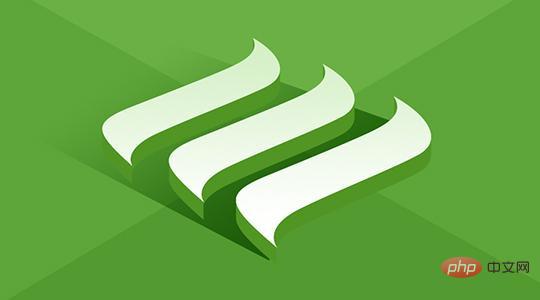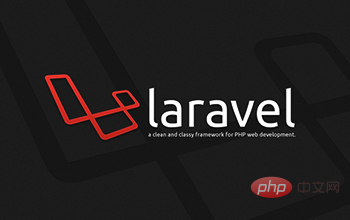 Backend Development
Backend Development
 PHP Tutorial
PHP Tutorial
 The advantages and disadvantages of mainstream PHP frameworks that you can understand at a glance
The advantages and disadvantages of mainstream PHP frameworks that you can understand at a glance
The advantages and disadvantages of mainstream PHP frameworks that you can understand at a glance

In this article, we will talk about the advantages and disadvantages of the four major PHP frameworks, so that you can better choose which PHP framework to use to complete the project during development, nonsense. Without further ado, let’s take a look! !
ThinkPHP
ThinkPHP (FCS) is a lightweight medium-sized framework, which is a Chinese PHP development framework transplanted from Java's Struts structure.
It uses object-oriented development structure and MVC mode, and simulates the tag library of Struts. It is more user-friendly in all aspects. It is relatively easy for developers familiar with J2EE to get started, and it is suitable for beginners of PHP framework.
The purpose of ThinkPHP is to simplify development, improve efficiency, and be easy to expand. Its support for databases already includes support for MySQL, MSSQL, Sqlite, PgSQL, Oracle, and PDO.
ThinkPHP has rich documentation and examples. The framework has strong compatibility, but its functions are limited, so it is more suitable for the development of small and medium-sized projects.
Advantages:
1. Easy to use, rich Chinese documentation;
2. The framework has strong compatibility, PHP4 and PHP5 are fully compatible Compatible and fully supports UTF8, etc.
3. Suitable for the development of small and medium-sized projects
Disadvantages:
1. The support for Ajax is not very good;
2. The directory structure is confusing and takes time to sort out;
3. It is easy to get started, but difficult to learn in depth.

Yii
Yii is a high-performance component-based PHP framework for developing large-scale Web applications.
Yii is written in strict OOP and has complete library references and comprehensive tutorials.
From MVC, DAO/ActiveRecord, widgets, caching, hierarchical RBAC, Web services, to theming, I18N and L10N, Yii provides almost everything needed for today's Web 2.0 application development. In fact, Yii is one of the most efficient PHP frameworks.
Advantages:
1. Pure OOP
2. Used for large-scale web applications
3. The model is easy to use
4. The development speed is fast and the running speed is also fast. Excellent performance and rich features
5. Use command line tools.
Disadvantages:
1. There is less guidance and consideration on the Model layer
2. Few document examples
3. Too much English
4. It requires proficiency in PHP technology and proficiency in OOP programming!
5. View is not an ideal view. The ideal view may be just html code and will not involve PHP code.
CodeIgniter
Advantages:
1.Code Igniter advocates the principle of "simplicity is beauty". There are no fancy design patterns, no fancy object structures, everything is so simple.
2. A few lines of code can start running, and a few more lines of code can be added to output. It can be said to be a model of "great simplicity".
3. The configuration is simple, all configurations are configured using PHP scripts, and the execution efficiency is high;
4. It has basic routing functions and can perform routing to a certain extent;
5. It has preliminary Layout function and can create a certain level of interface appearance;
6. The database layer is well encapsulated and has basic MVC functions. It is fast and concise, with not much code, high execution performance and simple framework. Easy to use, low learning cost, detailed documentation;
7. It comes with many simple and easy-to-use libraries, and the framework is suitable for small applications.
Disadvantages:
1. The implementation itself is not ideal. The internal structure is too confusing, and although it is simple and easy to use, it lacks expansion capabilities.
2. Simply understand the Model layer as database operations.
3. The framework is slightly simple and can only meet the needs of small applications, but is slightly less able to meet the needs of medium-sized applications.
Evaluation:
Overall In other words, it is worthwhile to use CodeIgniter to complete simple and fast applications. At the same time, it can construct a certain degree of layout to facilitate the reuse of templates.
The data operation layer is well encapsulated, and CodeIgniter does not use many too complex design patterns, and the execution performance and code readability are both good.
As for the additional library, it is not bad, simple and efficient.

Lavarel Framework
Advantages:
1. Laravel’s design ideas are very advanced and very suitable for Apply various development patterns TDD, DDD and BDD.
2. The biggest feature and excellence of laravel is that it integrates relatively new features of PHP and various design patterns.
3.Ioc container, dependency injection, etc.
Disadvantages:
Based on a component-based framework, so it is relatively bloated

More Multiple tutorials: "php tutorial"
The above is the detailed content of The advantages and disadvantages of mainstream PHP frameworks that you can understand at a glance. For more information, please follow other related articles on the PHP Chinese website!

Hot AI Tools

Undresser.AI Undress
AI-powered app for creating realistic nude photos

AI Clothes Remover
Online AI tool for removing clothes from photos.

Undress AI Tool
Undress images for free

Clothoff.io
AI clothes remover

AI Hentai Generator
Generate AI Hentai for free.

Hot Article

Hot Tools

Notepad++7.3.1
Easy-to-use and free code editor

SublimeText3 Chinese version
Chinese version, very easy to use

Zend Studio 13.0.1
Powerful PHP integrated development environment

Dreamweaver CS6
Visual web development tools

SublimeText3 Mac version
God-level code editing software (SublimeText3)

Hot Topics
 1378
1378
 52
52
 Alipay PHP SDK transfer error: How to solve the problem of 'Cannot declare class SignData'?
Apr 01, 2025 am 07:21 AM
Alipay PHP SDK transfer error: How to solve the problem of 'Cannot declare class SignData'?
Apr 01, 2025 am 07:21 AM
Alipay PHP...
 Explain JSON Web Tokens (JWT) and their use case in PHP APIs.
Apr 05, 2025 am 12:04 AM
Explain JSON Web Tokens (JWT) and their use case in PHP APIs.
Apr 05, 2025 am 12:04 AM
JWT is an open standard based on JSON, used to securely transmit information between parties, mainly for identity authentication and information exchange. 1. JWT consists of three parts: Header, Payload and Signature. 2. The working principle of JWT includes three steps: generating JWT, verifying JWT and parsing Payload. 3. When using JWT for authentication in PHP, JWT can be generated and verified, and user role and permission information can be included in advanced usage. 4. Common errors include signature verification failure, token expiration, and payload oversized. Debugging skills include using debugging tools and logging. 5. Performance optimization and best practices include using appropriate signature algorithms, setting validity periods reasonably,
 Explain the concept of late static binding in PHP.
Mar 21, 2025 pm 01:33 PM
Explain the concept of late static binding in PHP.
Mar 21, 2025 pm 01:33 PM
Article discusses late static binding (LSB) in PHP, introduced in PHP 5.3, allowing runtime resolution of static method calls for more flexible inheritance.Main issue: LSB vs. traditional polymorphism; LSB's practical applications and potential perfo
 Framework Security Features: Protecting against vulnerabilities.
Mar 28, 2025 pm 05:11 PM
Framework Security Features: Protecting against vulnerabilities.
Mar 28, 2025 pm 05:11 PM
Article discusses essential security features in frameworks to protect against vulnerabilities, including input validation, authentication, and regular updates.
 Customizing/Extending Frameworks: How to add custom functionality.
Mar 28, 2025 pm 05:12 PM
Customizing/Extending Frameworks: How to add custom functionality.
Mar 28, 2025 pm 05:12 PM
The article discusses adding custom functionality to frameworks, focusing on understanding architecture, identifying extension points, and best practices for integration and debugging.
 How to send a POST request containing JSON data using PHP's cURL library?
Apr 01, 2025 pm 03:12 PM
How to send a POST request containing JSON data using PHP's cURL library?
Apr 01, 2025 pm 03:12 PM
Sending JSON data using PHP's cURL library In PHP development, it is often necessary to interact with external APIs. One of the common ways is to use cURL library to send POST�...
 Describe the SOLID principles and how they apply to PHP development.
Apr 03, 2025 am 12:04 AM
Describe the SOLID principles and how they apply to PHP development.
Apr 03, 2025 am 12:04 AM
The application of SOLID principle in PHP development includes: 1. Single responsibility principle (SRP): Each class is responsible for only one function. 2. Open and close principle (OCP): Changes are achieved through extension rather than modification. 3. Lisch's Substitution Principle (LSP): Subclasses can replace base classes without affecting program accuracy. 4. Interface isolation principle (ISP): Use fine-grained interfaces to avoid dependencies and unused methods. 5. Dependency inversion principle (DIP): High and low-level modules rely on abstraction and are implemented through dependency injection.
 What exactly is the non-blocking feature of ReactPHP? How to handle its blocking I/O operations?
Apr 01, 2025 pm 03:09 PM
What exactly is the non-blocking feature of ReactPHP? How to handle its blocking I/O operations?
Apr 01, 2025 pm 03:09 PM
An official introduction to the non-blocking feature of ReactPHP in-depth interpretation of ReactPHP's non-blocking feature has aroused many developers' questions: "ReactPHPisnon-blockingbydefault...



